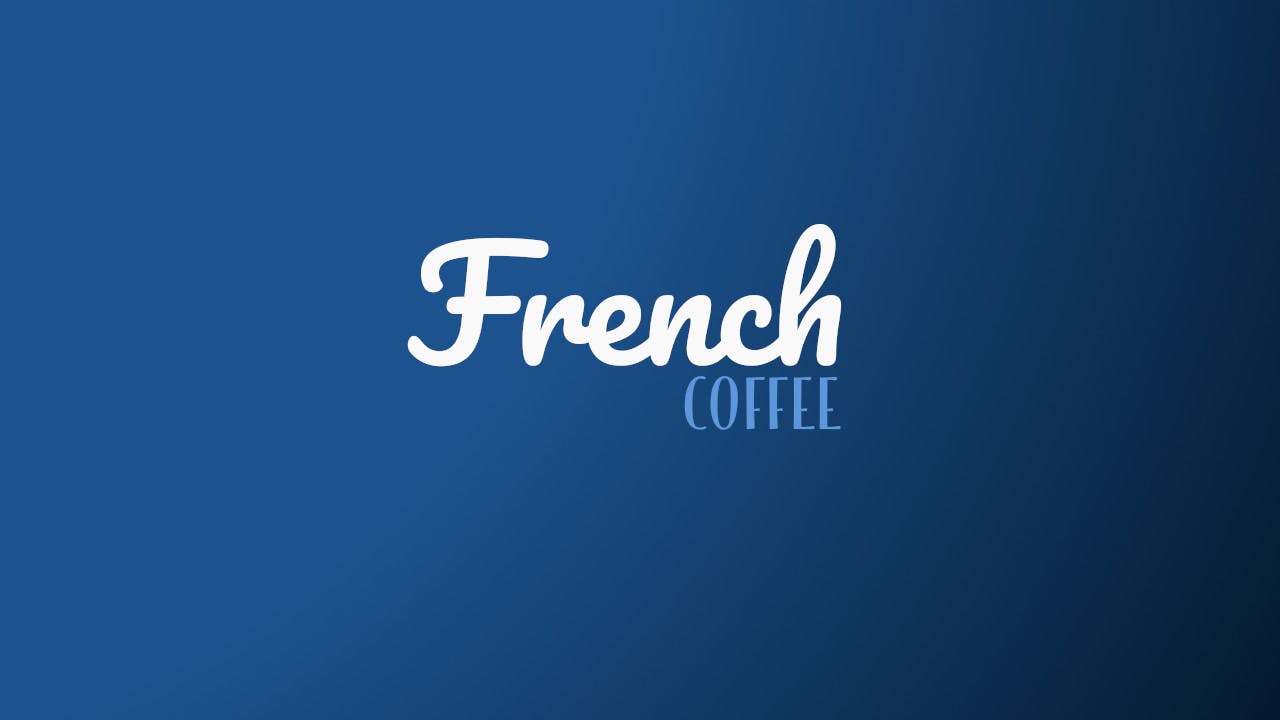All The French You Need To Order Coffee (And Describe It)
So you're in France and you want to know how to order a coffee in French?
I've got you covered in today's lesson.
Here you'll learn the different styles of coffee that French people prefer, how to ask for a coffee in French and some other related grammatical info to help you get it right.
How do you say coffee in French?
If you need to say coffee in French, here's how to say it.
The word café means coffee in French. It's a masculine word, so you need to use the article le (le café).
Different styles of coffee in French
As you would expect, in France there are many styles of coffee that people drink.
The most common is probably le café express (espresso).
Here are the most common coffee prefences in France:
| French | English | Description |
|---|---|---|
| Le café | Coffee | The most common way to refer to coffee in French |
| Le petit noir | The little black one | A colloquial term for a strong black coffee |
| Le café au lait | Coffee with milk | A coffee with milk, similar to a latte |
| Le café crème | Cream coffee | A coffee with milk, similar to a cappuccino |
| Le café filtre | Filter coffee | Drip coffee |
| Le café glacé | Iced coffee | Iced coffee |
| Le café soluble | Instant coffee | Instant coffee |
| Le café allongé | Extended coffee | An espresso with added hot water, similar to an Americano |
| Le café noir | Black coffee | A black coffee without any milk or sugar added |
| Le café express | Espresso | Espresso |
How to ask for a coffee in French
The most common and simplest way to ask for a coffee in French uses this formula:
Un ___ s'il vous plaît.
Insert your coffee preference.
Here's an example interaction (ordering a latte) to demonstrate:
Bonjour, un café au lait s'il vous plaît.
Très bien, un café au lait. Grand ou petit?
Grand, s'il vous plaît.
D'accord, ça fait quatre euros, s'il vous plaît.
Very straightforward!
Essential verbs you'll need in a French cafe
Here are the most important verbs to use in this context.
I recommend learning these with their conjugations.
| French | English | Description |
|---|---|---|
| Commander | To order | To ask for something from a server or bartender |
| Prendre | To take/to have | To order something to eat or drink |
| Choisir | To choose | To select from a list of options |
| Attendre | To wait | To stay in a place until someone or something arrives |
| Servir | To serve | To provide food or drinks to customers |
| Payer | To pay | To give money in exchange for something |
| Demander | To ask | To inquire or request something |
| Recommander | To recommend | To suggest a particular item or option to a customer |
| Ajouter | To add | To request something extra be added to a dish or drink |
| Annuler | To cancel | To remove an order or reservation |
Some grammar points you should remember
In French, we say "of the" for "some".
We say we have "some" coffee ("du cafe"). The expression is formed by "of" (de) and "the" (le).
Don't forget that "the" changes depending on whether we are talking about a feminine, masculine or neuter or singular or plural nouns.
In the case of our coffee, it's masculine so it gets "le".
The French, however, don't like the sound of "duh luh", so they combine "de" and "le" and use "du".
Neuter nouns work the same, but feminine nouns keep "de", because the sound is nicer. (The French like their language to sound pretty!)
"Some cream" would therefore be "de la creme" (crem).
You are now seeing how important it is to learn a noun with its article so you always know the gender.
Memorize the word with its article, and you will always know how to treat it in a sentence.
So when you looked up milk, you should have memorized "le lait" and when you looked up cream, you should have memorized "la creme".
What about plural nouns?
Well, the French must also have a problem with "de les", because this construction changes to "des" (day).
"Cafe au lait" is an expression you may have heard before.
The expression "a la" means "with" or "in the style of".
Let's compare Cafe au lait with Pie a la mode (half English, half French).
Since, as we now know, milk is masculine, it should be le lait, but the French don't use a le, they use au, hence we have "cafe au lait".
Mode, which means "style", is feminine, and so the a la can stay as it is.
The same rule that exists for "de" with the plural exists for "a" with the plural.
So, rather than "a les", we say "aux" for the plural.

SUBSCRIBE: